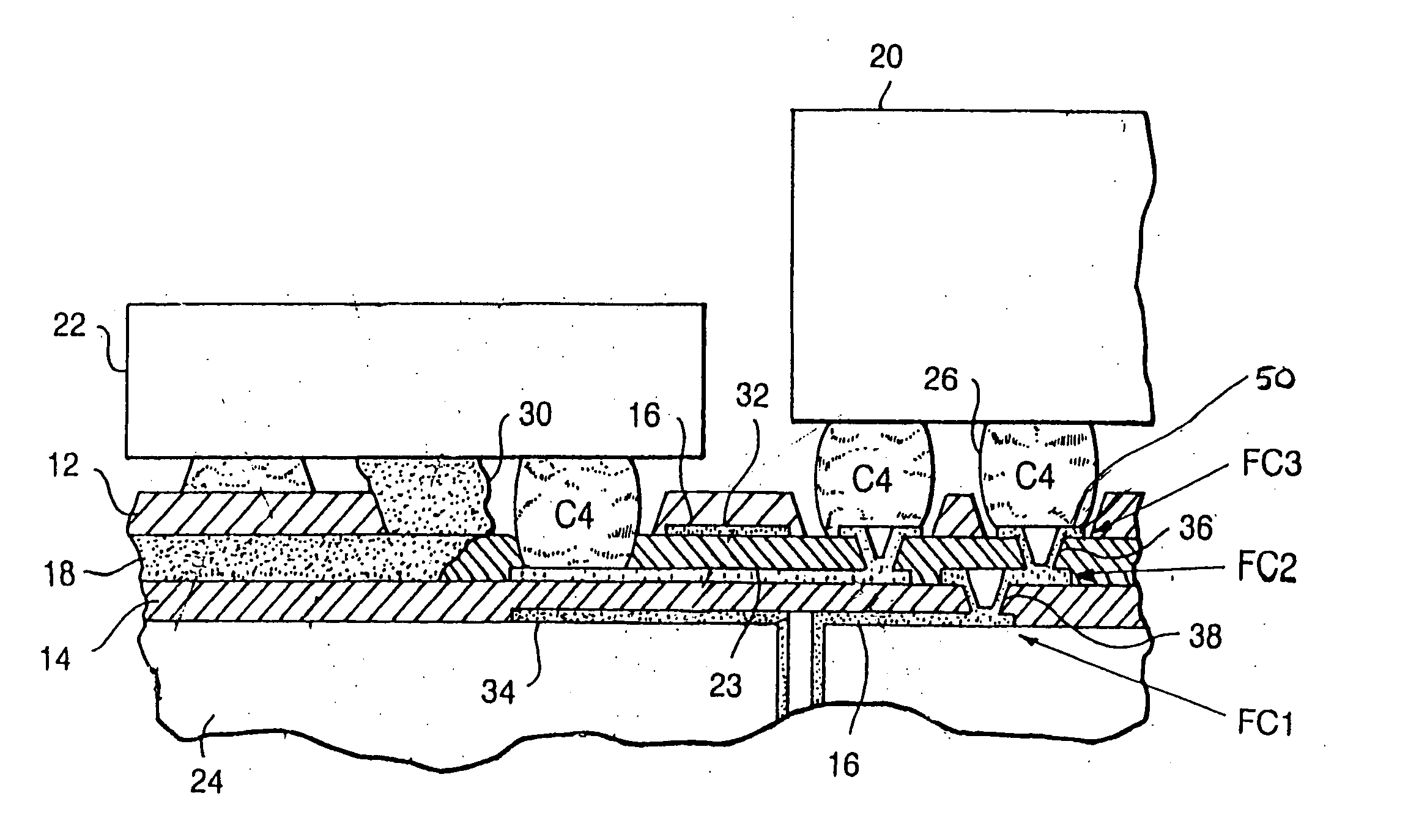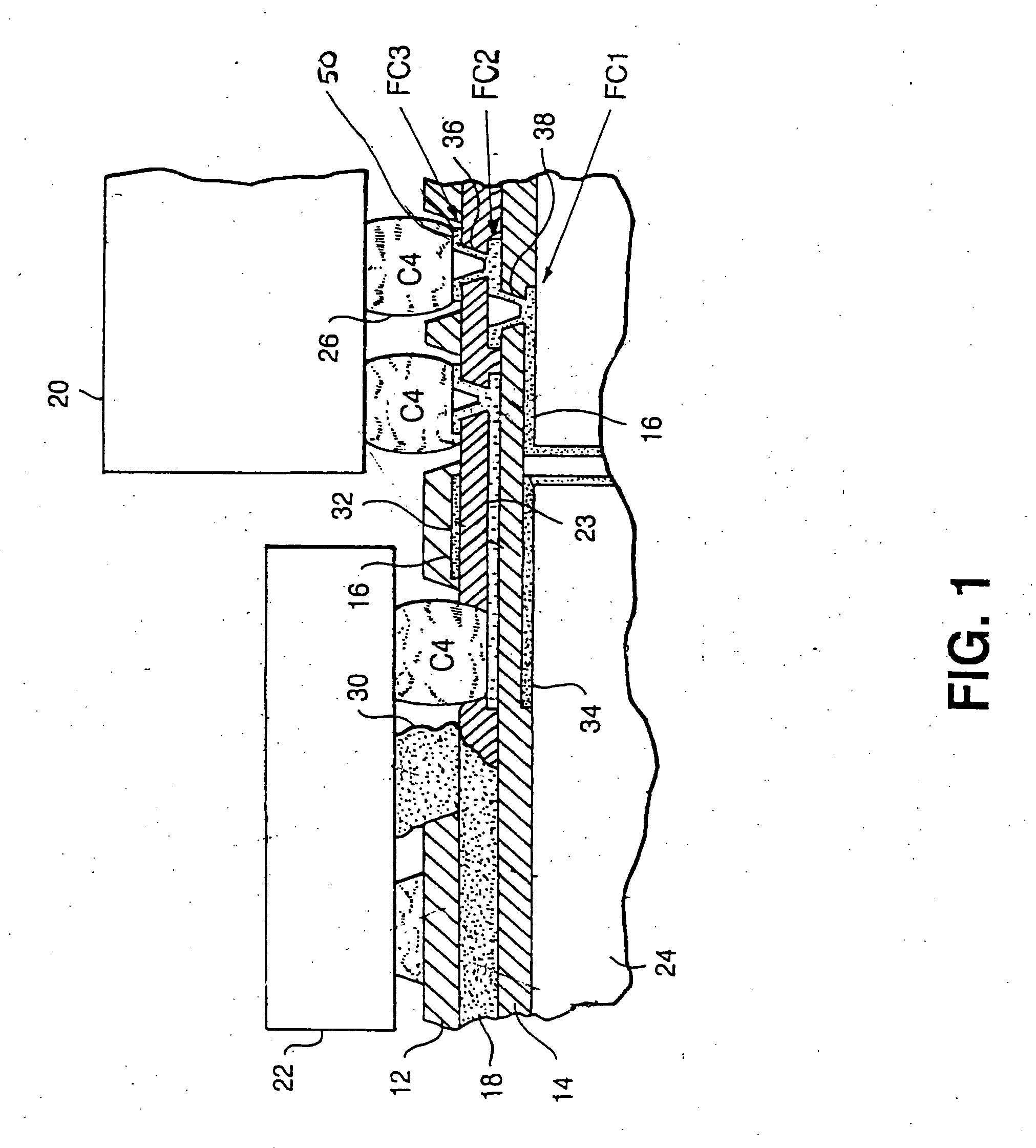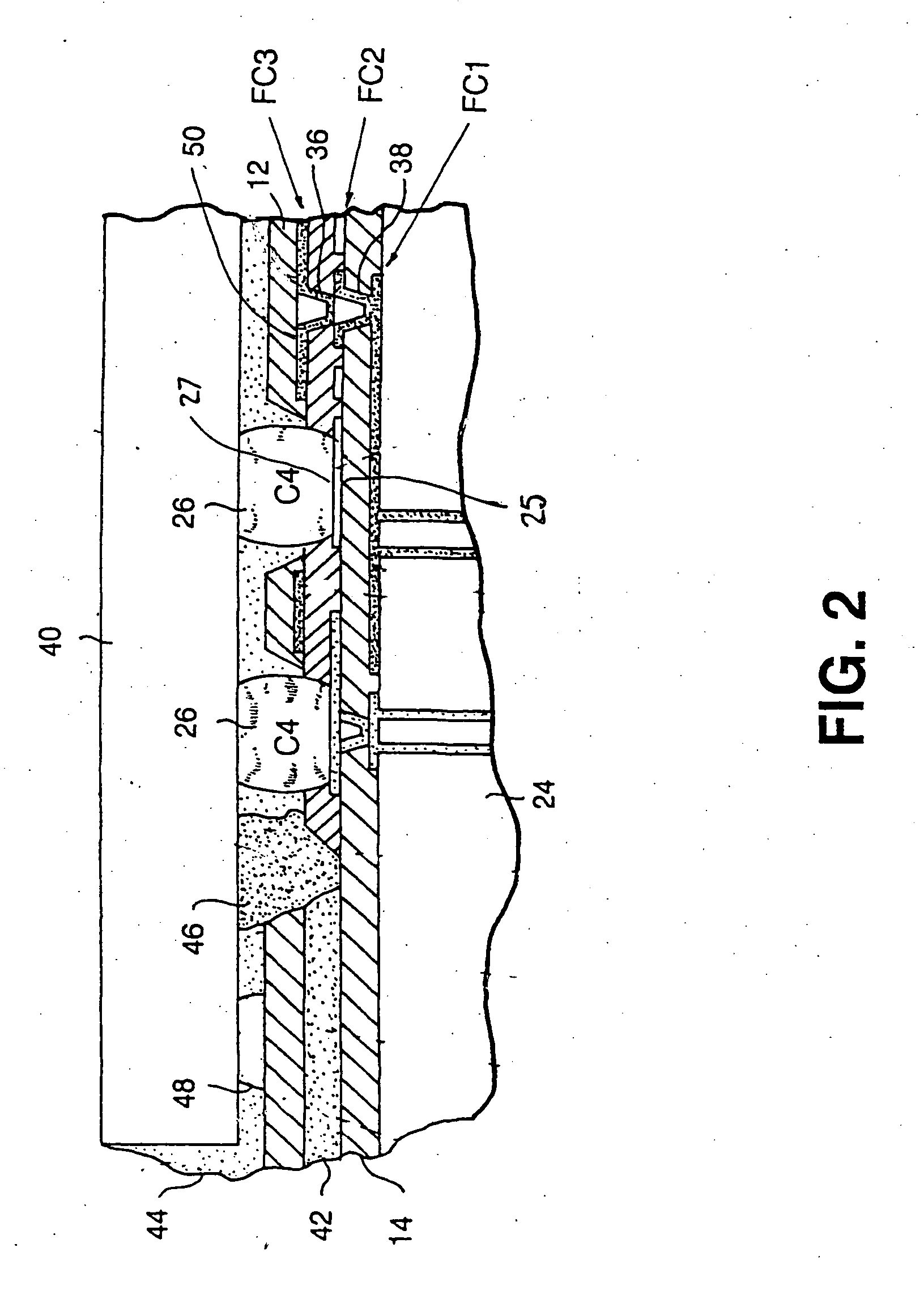Passive alignment of VCSELs to waveguides in opto-electronic cards and printed circuit boards
a technology of optoelectronic cards and printed circuit boards, applied in the direction of optical waveguide light guides, instruments, optical elements, etc., can solve the problems of adversely affecting the reliability and service life of the entire electronic package, and achieve the effects of improving the thermal stability of the applicable optoelectronic card or printed circuit board, enhancing versatility and economic efficacy, and improving passive alignmen
- Summary
- Abstract
- Description
- Claims
- Application Information
AI Technical Summary
Benefits of technology
Problems solved by technology
Method used
Image
Examples
Embodiment Construction
[0029] Referring specifically to FIG. 1 of the drawings, there is illustrated a sectional view of a portion of an inventive structure with two built-up cladding layers 12, 14 for wiring 16 and discrete transmitter / receiver waveguide 18 in an intermediate layer, including a signal plane 23, and processor chips 20; and an optical device 22. Additional wiring layers can be added above the upper cladding layer 12, however, thermal stability and electrical performance are at their optimum with the present structure.
[0030] The foregoing structural configuration eliminates the need for a solder mask inasmuch as the upper cladding layer 12 can readily serve for this purpose. The core 24 can be comprised of any low expansion material which approaches the coefficient of thermal expansion (CTE) of the chips 20, thereby further improving alignment and minimizing any encountered strain in the C4 joints 26. Hereby, standard epoxy glass composites can be employed for the core, consisting of cloth...
PUM
 Login to View More
Login to View More Abstract
Description
Claims
Application Information
 Login to View More
Login to View More - R&D
- Intellectual Property
- Life Sciences
- Materials
- Tech Scout
- Unparalleled Data Quality
- Higher Quality Content
- 60% Fewer Hallucinations
Browse by: Latest US Patents, China's latest patents, Technical Efficacy Thesaurus, Application Domain, Technology Topic, Popular Technical Reports.
© 2025 PatSnap. All rights reserved.Legal|Privacy policy|Modern Slavery Act Transparency Statement|Sitemap|About US| Contact US: help@patsnap.com



